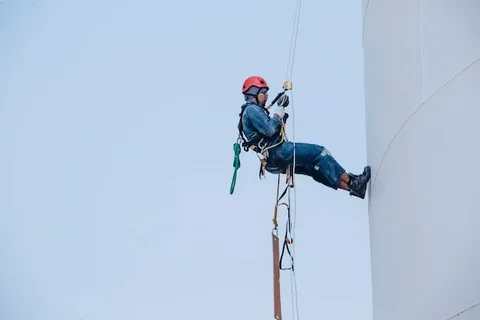Rope Access Technician: Is This the Safest Way to Work at Heights in Modern Industries?

When it comes to working at extreme heights or in awkward spaces, scaffolding and boom lifts are no longer the only solutions. This leads to a critical question: How do industries maintain safety while increasing efficiency in hard-to-reach areas? That’s where a rope access technician becomes a valuable asset, offering a skillset designed for precision, safety, and flexibility.
From tall buildings to bridges, towers, and industrial sites, rope access professionals carry out inspections, maintenance, and installations where traditional access methods would be costly, time-consuming, or simply impractical.
What Does a Rope Access Technician Do?
A rope access technician uses a system of ropes, harnesses, and climbing techniques to safely access and work at height or in confined spaces. It’s not just about getting up high—it’s about performing skilled tasks while suspended, including:
-
Building façade inspections and repairs
-
High-rise window cleaning
-
Painting and coating
-
Electrical and signage installation
-
Welding, rigging, or non-destructive testing (NDT)
These tasks require not just physical skill but also technical trade qualifications, safety training, and often a background in construction, engineering, or maintenance.
Why Choose Rope Access Over Traditional Methods?
The main advantages are:
-
Speed of setup and pack down – No need to assemble scaffolding or wait for machinery
-
Minimal disruption – Ideal for busy commercial zones or public infrastructure
-
Cost efficiency – Fewer materials and less manpower required
-
Accessibility – Reach areas that cranes or lifts simply can’t
Because a rope access technician relies on lightweight gear and proven climbing techniques, the impact on the structure and surroundings is minimal, making it perfect for delicate or historic buildings.
Is It Really Safe?
Absolutely—but only when done by trained professionals. Rope access work is regulated under strict safety standards in Australia, including IRATA (Industrial Rope Access Trade Association) and SPRAT (Society of Professional Rope Access Technicians) certifications. These systems enforce:
-
Rigorous training and assessment
-
Use of dual rope systems (main and backup lines)
-
Thorough risk assessments and rescue plans
-
Regular equipment inspections
Statistics consistently show rope access has one of the lowest incident rates of any method for working at height.
Where Are Rope Access Technicians in Demand?
The role spans several industries, including:
-
Construction and high-rise maintenance
-
Oil and gas sectors (onshore and offshore)
-
Mining and industrial plant maintenance
-
Telecommunications (antenna and tower work)
-
Renewable energy (wind turbine servicing)
In metro areas like Sydney, Melbourne, and Brisbane, rope access technicians are frequently seen scaling skyscrapers for inspections, façade upgrades, and signage installations.
Final Thought: Skilled, Safe, and Suspension-Savvy
If you thought hanging off the side of a building was reserved for stuntmen, think again. A rope access technician brings together technical trades, height safety, and smart access planning—all in one role.
For businesses needing efficient and reliable access solutions, this could be the most cost-effective and safest way to get the job done.
- Information Technology
- Office Equipment and Supplies
- Cars and Trucks
- Persons
- Books and Authors
- Tutorials
- Art
- Causes
- Crafts
- Dance
- Drinks
- Film
- Fitness
- Food
- Giochi
- Gardening
- Health
- Home
- Literature
- Music
- Networking
- Altre informazioni
- Party
- Religion
- Shopping
- Sports
- Theater
- Wellness



